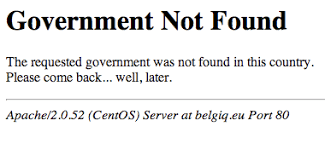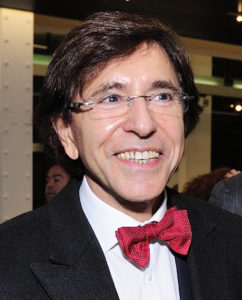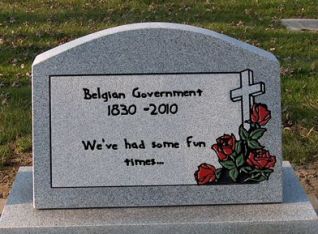Fun Fact: Belgium owns world record for longest period without a government
541 days. That’s how long it took Belgian politicians to form an official government after the federal elections of June 13, 2010. It earned Belgium a Guinness World Record for going the longest time with no government, smashing the previous record held by Iraq which went government-free for 289 days in 2010.
You would think that a country would fall apart in the absence of a central government. Just look at how Americans start panicking when their government shuts down.
But not the Belgians who managed just fine with the help of a caretaker government, a well-oiled bureaucracy, and a naughty sense of humour even as their politicians spent a year and a half bickering away.

What was the problem?
Following the 2010 federal elections, political parties elected to the Chamber of Representatives couldn’t form a coalition government because, as usual, the Flemish and Francophones were clashing over policy issues.
Since Belgium operates under a parliamentary system, members of the federal government – namely, the Prime Minister and his cabinet – are drawn from the parties that constitute the coalition government. If no coalition is formed, no federal government will materialise.
Differing opinions on state reforms made it impossible to build a coalition. The Flemish demanded a transfer of additional powers from the federal to the regional level. The Francophones were against further decentralisation of powers since it would reduce federal funding for their less wealthy region.
There were other issues involved, but the stickiest of all was the debate over Brussels-Halle-Vilvoorde or BHV.

What was the big deal about BHV?
BHV was an electoral district composed of the bilingual Brussels-Capital Region and Halle-Vilvoorde, a unilingual territory belonging to the Flemish Brabant Province.
As one electoral district, BHV voters could pick from the same list of candidates coming from both Flemish and Francophone political parties since Brussels is a bilingual area.
That meant French speakers living in the Flemish area of Halle-Vilvoorde would have the right to vote for Francophone candidates. The Flemish feared it gave the French-speaking political parties an unfair advantage since Brussels was already largely dominated by Francophones.
To eliminate this unfair advantage, the Flemish wanted to split BHV into two separate districts while the Francophones wanted to keep it intact.
The battle over BHV started all the way back in 2007 following the federal elections. It sparked a political crisis in Belgium which led to cabinet resignations.
After the final resignation of Prime Minister Yves Leterme in April 2010, early federal elections were held two months later but the crisis dragged on until 2011.

How was the crisis resolved?
After about 18 months of negotiations led by various mediators and negotiators appointed by King Albert II, the Flemish and Francophones finally reached a compromise deal in October 2011.
Under the sixth Belgian state reform a.k.a. the Butterfly Agreement, the Brussels-Capital Region became an independent electoral and judicial district while Halle-Vilvoorde was placed under Flemish Brabant jurisdiction.
Several powers were turned over from the federal level to the regions and communities. It was also decided that no more elections will be held for the Belgian Senate, which will instead be occupied by representatives from regional parliaments.
It was Socialist Party Representative Elio Di Rupo who finally brokered the deal after several failed attempts. He also succeeded in forming a coalition government among the Christian-Democratic Flemish party CD&V, the Humanist Democratic Centre (cdH), the Socialist Party (PS), the Socialist Party Differently (sp.a), the Open Flemish Liberals and Democrats (Open Vld), and the Reformist Movement (MR).
On December 6, 2011, a new government was finally sworn in with Di Rupo as prime minister.

How did the Belgians make it through the crisis?
Belgium managed its national affairs under a caretaker government run by Leterme.
King Albert II played his constitutional role as arbiter of Belgian national unity by sending negotiator after negotiator to work out a peaceful settlement. Proof that when all else fails between the Flemish and the Francophones, the monarchy will be the neutral force that holds Belgium together.
Since power is heavily decentralised in Belgium, regional and local governments continued to function even without a central government.
The country’s notoriously complex and cumbersome bureaucracy became a saving grace in a time of crisis. Its multitude of apolitical civil servants kept government services up and running. Proof that your greatest weakness can sometimes be your greatest strength.
Most of all, Belgians handled the crisis with a lot of humour amid serious protests for a new government. With their penchant for self-deprecating jokes, Belgians turned the situation into a source of fun and amusement.
There were calls to boycott sex and shaving until the brouhaha is resolved. Free french fries and beer were also handed out to celebrate Belgium’s record-breaking deadlock. Proof that nothing, not even a crisis, can rattle or break the lah-di-dah laid-back Belgians.



